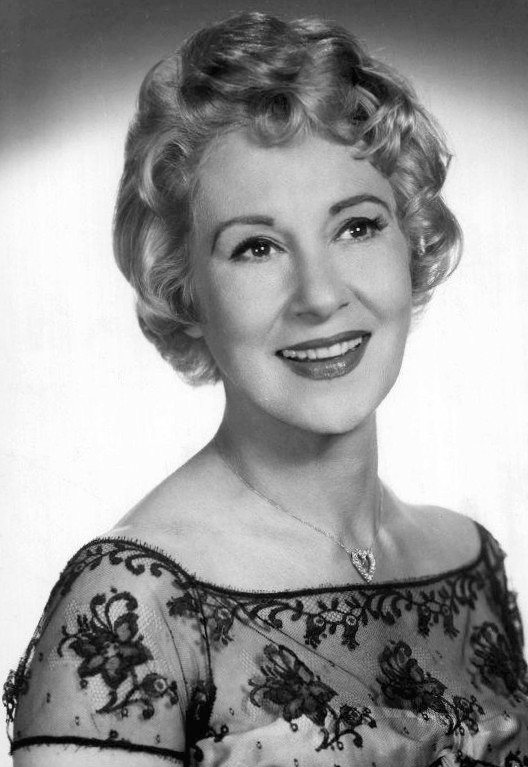Arlene Francis (Arline Francis Kazanjian)

Arlene Francis was born on October 20, 1907, in Boston, Massachusetts, the daughter of Leah (née Davis) and Aram Kazanjian. Her Armenian father was studying art in Paris at the age of 16 when he learned that both his parents had died in one of the Hamidian massacres perpetrated by the Ottoman Empire in Anatolia between 1894 and 1896. He emigrated to the United States and became a portrait photographer, opening his own studio in Boston in the early 20th century. Later in life, Kazanjian painted canvases of dogwoods, “rabbits in flight”, and other nature scenes, selling them at auction in New York. When Arlene Francis was seven years old, her father decided that opportunities were greater in New York and moved the family to a flat in Washington Heights, Manhattan. She remained a New Yorker until she entered a San Francisco nursing home in 1995. After attending Finch College, Francis had a broad and varied career as an entertainer. She was an accomplished actress, with 25 Broadway plays to her credit, from La Gringa in 1928 to Don’t Call Back in 1975. She also performed in many local theatre and off-Broadway plays. Arlene Francis became a well-known New York City radio personality, hosting several programs, including a long-running midday chat show on WOR-AM that ran from 1960 to 1984. In 1938, she became the female host of the radio game show What’s My Name?. Although several men appeared as co-hosts over the years, Francis was the sole female host throughout the program’s run (on ABC, NBC and Mutual networks) until it ended in 1949. Francis played Betty in Betty and Bob in 1940. In 1943, she began as host of a network radio game show, Blind Date which she hosted on television on ABC and NBC from 1949–52. She was a regular contributor to NBC Radio’s Monitor in the 1950s and 1960s.
Arlene Francis was a panelist on the weekly game show What’s My Line? from its second episode on CBS in 1950 until its network cancellation in 1967, and in its daily syndicated version from 1968–75. The original show, which featured guests whose occupation, or “line,” the panelists were to guess, became one of the classic television game shows, noted for the urbanity of its host and panelists. She appeared on other game shows, including Match Game, Password, To Tell the Truth, and other programs produced by Mark Goodson and Bill Todman, including a short-lived hosting stint on Goodson-Todman show By Popular Demand replacing original host Robert Alda. Francis was the emcee on the last episodes of the short-lived The Comeback Story, a 1954 reality show on ABC in which mostly celebrities shared stories of having overcome adversities in their personal lives. Arlene Francis was a pioneer for women on television, one of the first to host a program that was not musical or dramatic in nature. From 1954 to 1957, she was host and editor-in-chief of Home, NBC’s hour-long daytime magazine program oriented toward women, which was conceived by network president Pat Weaver to complement the network’s Today and Tonight programs. Newsweek magazine put her on its cover as the “first lady of television”. She hosted Talent Patrol in the mid-1950s. She acted in several films, debuting in the role of a streetwalker in Murders in the Rue Morgue (1932), in which she fell prey to mad scientist Bela Lugosi. Francis was cast even though her only acting experience at that point was in a small Shakespearean production in the convent school from which she had recently graduated. Later she appeared in All My Sons (1948) with Edward G. Robinson.
In the 1960s, Arlene Francis played the wife of James Cagney in One, Two, Three (1961), directed by Billy Wilder and filmed in Munich. She also made The Thrill of It All (1963) with James Garner and the television version of the play Laura (1968), which she had played on stage several times. Her final film performance was in the Wilder film Fedora (1978). She wrote an autobiography in 1978 entitled Arlene Francis: A Memoir with help from longtime friend Florence Rome. She wrote That Certain Something: The Magic of Charm in 1960 and a cookbook, No Time for Cooking, in 1961. She was a member of the Peabody Awards Board of Jurors from 1980 to 1982. Francis was married twice. Her first marriage was to Neil Agnew, from 1935–45. Agnew worked in the sales department of Paramount Pictures, which required frequent business trips that left Francis home alone. The marriage ended in divorce in 1945. Arlene Francis’s second marriage was to actor and producer Martin Gabel, from 1946 until he died of a heart attack on May 22, 1986. Gabel was a frequent guest panelist on What’s My Line? The couple, who often exchanged endearments on the show, had a son, Peter Gabel, born January 28, 1947, a legal scholar associated with New College of California in San Francisco. Peter Gabel was an associate editor of Tikkun. While working at the 1964 New York World’s Fair, Peter surprised his mother as a contestant on What’s My Line. Francis was known for a heart-shaped diamond pendant, a gift from Gabel, which she wore on nearly all of her What’s My Line appearances. A mugger robbed her of the pendant as she was exiting a New York City taxi in 1988. Arlene Francis died at the age of 93 on May 31, 2001 in San Francisco, California from Alzheimer’s disease and cancer. She was interred in Roosevelt Memorial Park in Trevose, Pennsylvania.
Born
- October, 20, 1907
- USA
- Boston, Massachusetts
Died
- May, 31, 2001
- USA
- San Francisco, California
Cause of Death
- Alzheimer's disease and cancer
Cemetery
- Roosevelt Memorial Park
- Trevose, Pennsylvania
- USA



